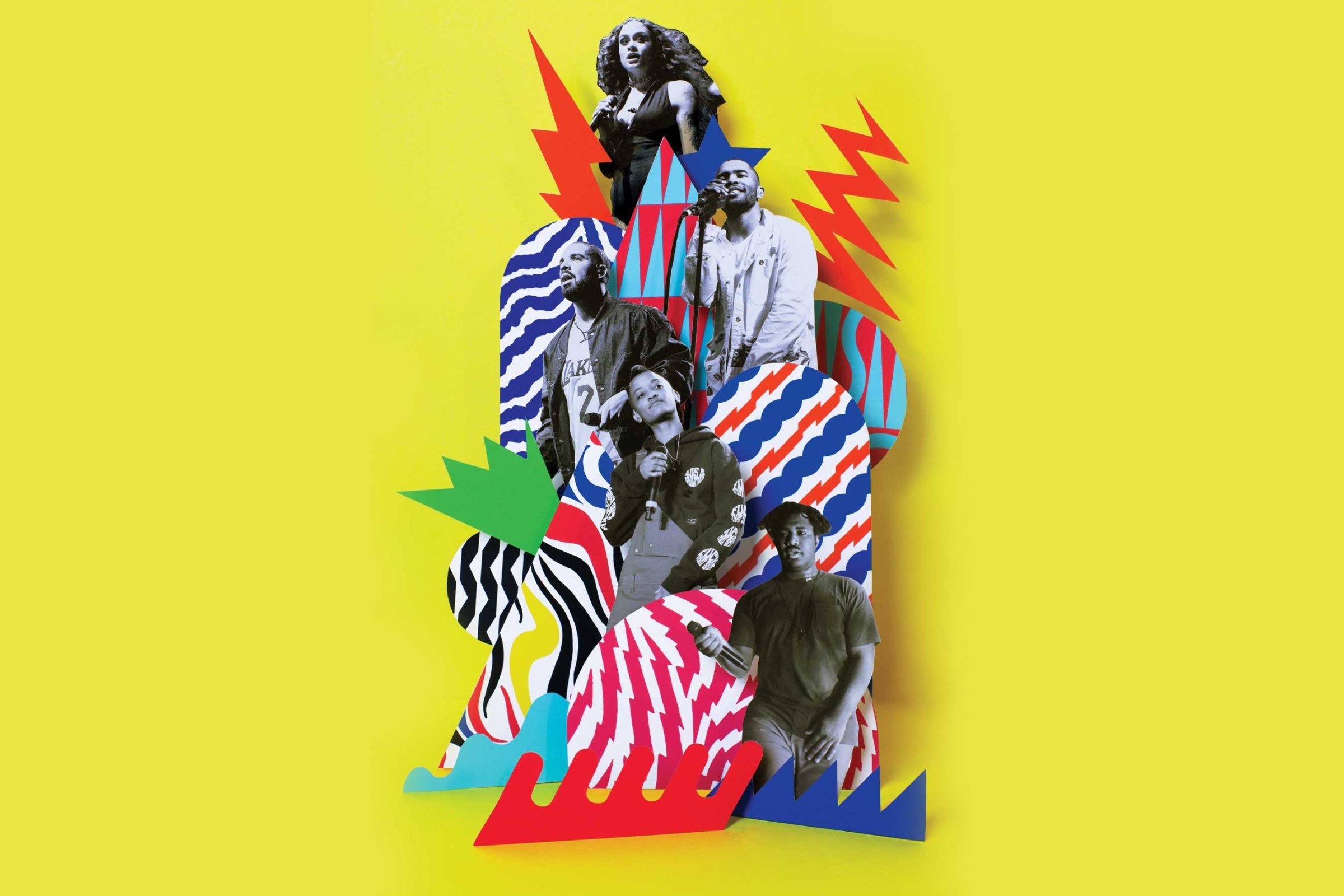
What does genre mean in 2017? The categories that once defined listener taste—rock, hip-hop, country—are collapsing into one another. Streaming services like Spotify and Apple Music have had a homogenizing, sound-blurring effect on listening habits around the world, and rising musicians are less averse to coloring outside the old lines. Which makes sense: If everyone is listening to your song on a custom playlist, who cares which genre-bound radio station would theoretically play it?
The genre-busting results play out on the charts on a regular basis. Recent chart-toppers include Ed Sheeran’s Caribbean dance-folk, the Chainsmokers’ arena-rock EDM and Rae Sremmurd’s diaphanous pop-rap. While the weekly jostling for the top spot is as sanguine as ever, the most fascinating changes are the ones taking place within the very styles that are starting to crumble.
Take R&B, the home of some of this year’s most compelling full-length releases. The genre has a long, rich history, but it is being rapidly reshaped by young talents more interested in atmosphere and perspective than devotion to classical ideals.
It’s 2017 and R&B contains multitudes. The precocious Texas singer Khalid, for example, positioned himself as the voice of a blossoming generation with his debut American Teen, drunk on youth and the shimmering textures of ’80s synth-pop. His Oakland counterpart Kehlani revitalized the sounds and structure of turn-of-the-millennium pop and R&B on the tough-talking SweetSexySavage. Sydney “Syd” Bennett—a relative veteran and former member of the anarchic hip-hop collective Odd Future—came forward with Fin, a slinky solo debut. The London singer-producer Sampha made his own statement with the bruised Process.
None of these artists have much in common in terms of straightforward sonics. They’re not retro revivalists like Maxwell and KING. They don’t have the chart chops of Rihanna and Bruno Mars. They’re not established do-it-all professionals like Usher and Alicia Keys. They’re not making music that’s as socially conscious as recent LPs by Solange and Blood Orange. They don’t have the shadowy lecherousness of the Weeknd and his stylistic imitators.
What links them is a common interest in introspection and the force of their personalities. This year’s rising stars aren’t ciphers or blank slates. They’re storytellers with diverse backstories, interests and influences. Sampha’s aching soul is shaped by anxiety and family tragedy. Kehlani tries to reconcile her radiant swagger with a desperate need for self-care. Khalid is an old soul reminiscing about high school ennui before he’s even old enough to drink legally. Even Syd’s more traditional focus on sex is rendered radical by the fact that she’s a woman coolly singing about seducing other women. Thus the freshness and flexibility to this crop of LPs.
Not that they aren’t heirs of sorts. Nobody’s done more to melt down the former binary between rap and R&B than Drake, this decade’s most influential megastar. He too has embraced pastiche with the release of his new “playlist” album, More Life, last month. Its most exciting songs move beyond R&B and rap to adopt the sounds of black music around the globe: British grime, Caribbean dancehall, African pop music, ebullient house. This playlist finds Drake looking at the genres eroding around him and slamming his foot on the accelerator. Whatever R&B looks like by next year, this year will be have been a memorable process of bold undoing and thrilling rebuilding.•
More Must-Reads from TIME
- Cybersecurity Experts Are Sounding the Alarm on DOGE
- Meet the 2025 Women of the Year
- The Harsh Truth About Disability Inclusion
- Why Do More Young Adults Have Cancer?
- Colman Domingo Leads With Radical Love
- How to Get Better at Doing Things Alone
- Michelle Zauner Stares Down the Darkness
Contact us at letters@time.com